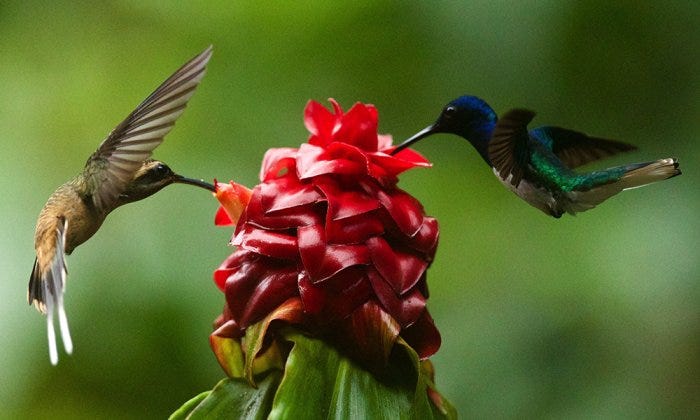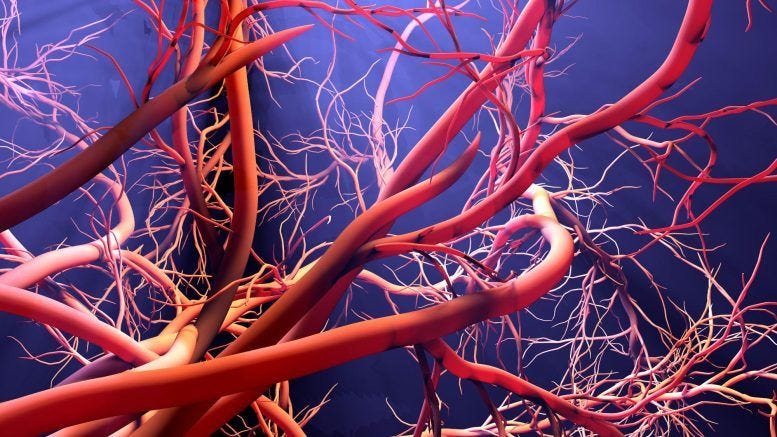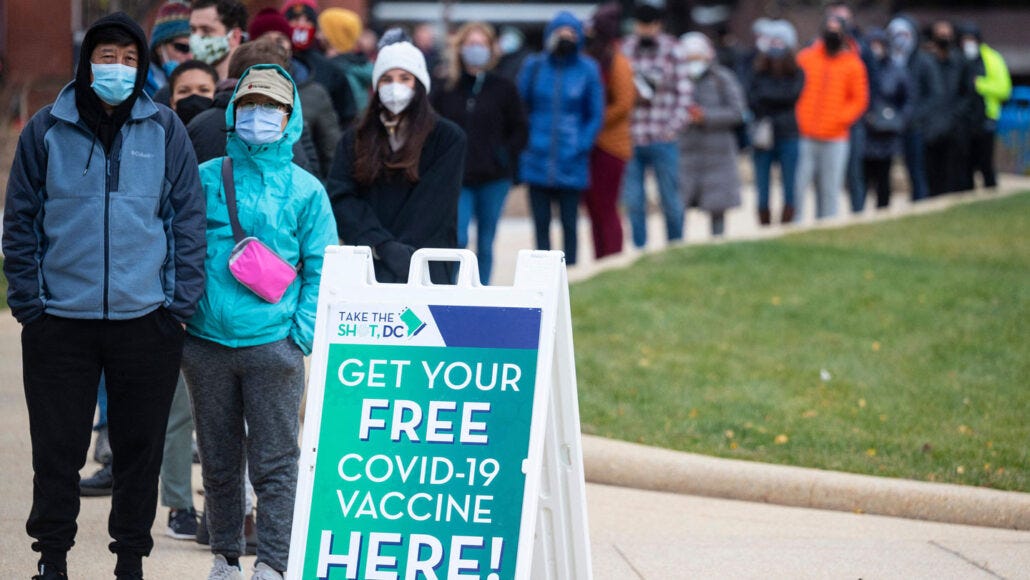Sci-Ed Update 242
A new flouorescent dye that can cross the BBB barrier in the brain, using pecha kucha for active learning, and a lot more!
For those of you waiting for a fresh episode of The A&P Professor podcast, it’s coming soon! It’s all about chatbots—something a lot of us have been talking about. I hope to have it ready for release on Wednesday or Thursday.
In the meantime, you can follow the podcast by searching “The A&P Professor” or “Kevin Patton” wherever you listen to audio. Or search your device’s app store (with the same terms) and download the free app to listen. Any of these methods will alert you immediately to all new episodes— so you’ll seem “ahead of the game” when chatting with colleagues.
Known as fluorescence, this glowing effect can be useful for rendering visible things that otherwise go unnoticed. Image is in the public domain
New Fluorescent Dye Can Light up the Brain
Researchers have developed a new tool for non-invasive brain imaging that can cross the blood-brain barrier and can differentiate between healthy tissue and glioblastoma brain tumors in mouse models.
Rice’s Han Xiao, Stanford’s Zhen Cheng and collaborators have developed a new tool for noninvasive brain imaging that can help illuminate hard-to-access structures and processes.
Their small-molecule dye, or fluorophore, is the first of its kind that can cross the blood-brain barrier. What’s more, it allowed the researchers to differentiate between healthy brain tissue and a glioblastoma tumor in mice.
“This could be very useful for imaging-guided surgery, for example,” Xiao said. “Using this dye, a doctor could determine where the boundary is between normal brain tissue versus tumor tissue.”
The study is featured on the cover of the Dec. 28 issue of the Journal of the American Chemical Society.
Read more→ AandP.info/ihi
Pecha Kucha is the Answer
Pecha Kucha (Japanese for chit-chat) is nothing new in academic circles. It’s a presentation style that emerged around 2003 and has since been leveraged in performance and conferences across the world. In its original form, a presenter offered 20 slides, and had 20 seconds to present each slide (Zepeda, 2014). Each slide is to be comprised of a photo only, no words. This storytelling presentation utilizes imagery and efficient use of spoken word to create a memorable, meaningful, and concise presentation. It’s a great method for teaching students, and their instructors, how to create their best presentations for active learning.
Read more→ AandP.info/iu3
OpenAI begins piloting ChatGPT Professional, a premium version of its viral chatbot
OpenAI this week signaled it’ll soon begin charging for ChatGPT, its viral AI-powered chatbot that can write essays, emails, poems and even computer code. In an announcement on the company’s official Discord server, OpenAI said that it’s “starting to think about how to monetize ChatGPT” as one of the ways to “ensure [the tool’s] long-term viability.”
KP: Episode 131, planned for release this week, will discuss the role of ChatGPT and other chatbots in teaching and learning (and cheating) in the anatomy and physiology course.
Read more→ AandP.info/9oz
Jameela Jamil is a big advocate of body neutrality. Photo by David Livingston / Stringer / Getty Images
Positive Body Image
It’s aimed at people who have become disillusioned with the body positivity movement, and those who find constantly loving your body too difficult.
Constantly “loving your body” – no matter what – can feel impossible at the best of times. Not to mention that if you fail, it often leaves you feeling even worse about yourself.
It’s no wonder then that some people are beginning to reject this idea of body positivity altogether, advocating instead for a new mode of thinking, known as “body neutrality”. Some of the movement’s biggest advocates include Taylor Swift and actress Jameela Jamil.
Body neutrality is sometimes pitched as a “middle ground” between the polarising messages of loving or hating your body. It’s aimed at people who have become disillusioned with the body positivity movement, and those who find constantly loving your body too difficult.
Read more→ AandP.info/cvt
Image: James Wainscoat/Unsplash
What Bird Longevity Might Teach Us About Human Health
Birds have an exceptional resistance to aging. Can scientists discover their secrets?
High energy, high heat, and high blood sugar should accelerate a number of the major processes that contribute to aging, one of which is free radical production. Recall that free radicals are molecules that can damage all classes of biological molecules, including DNA. To maintain cellular health, free radicals need to be destroyed rapidly by our antioxidant defenses, and the damage they inevitably cause needs to be repaired rapidly. Birds must have exceptionally effective antioxidant defenses and exceptionally rapid repair mechanisms. In fact, some of the few studies that have been done trying to understand bird longevity found that their cells produce fewer free radicals at the same rate of energy production as similar-size mammals.
However, we don’t understand how they do it. They also can withstand more free-radical damage before their cells die. We don’t understand how they do that, either.
The other aging process that according to what we understand about aging should be accelerated in birds is browning of proteins. Proteins power the chemical reactions that define life. In their role powering chemical reactions, proteins need to be folded in complex and precise ways, like origami. Any slight deviation from perfect folding compromises their function. Imperfectly folded proteins not only lose function, but they become sticky, causing them to clump together with other misfolded proteins. The plaques and tangles of Alzheimer’s disease are particularly well-known clumps of misfolded proteins, but there are many others.
Read more→ AandP.info/djr
Researchers find that genetics combined with long years of schooling can lead to nearsightedness in children.
Education and Genetics: A Dangerous Combination That Can Cause Nearsightedness
A new study published by a team led by Jeremy Guggenheim of Cardiff University in the journal PLOS Genetics has uncovered five genetic variants that significantly raise a person’s risk of developing nearsightedness as they spend more time in school.
Nearsightedness is a common eye disorder that can lead to irreversible vision impairment in older individuals and often develops in childhood. The condition is believed to be caused by a combination of genetics, limited time spent outdoors, and prolonged years of education.
Read more→ AandP.info/2x2
Ten Things We Forget to Tell Students About Cells | A Forest in My Office | TAPP 126
We list ten things that we often forget to tell—or remind—our students about cells. We learn how to create a peaceful forest-like retreat in our office using soundscapes, I get my winter shorts ready (seriously), and Margaret Reece comments about teaching urinary concepts. That last topic spurs a rant from Kevin on diversity of course sections.
To listen to this episode, click on the player (if present) or this link→ theAPprofessor.org/podcast-episode-126.html
The results of the study indicate that while a healthy diet can have a positive impact on the molecular health of blood vessels, it is not a complete solution.
New Research Reveals That a Poor Diet Damages Your Blood Vessels
The research team discovered that metabolic disease has a distinct impact on the blood vessels of various organs in our body. They found that blood vessels in the liver and fat tissue have difficulty processing excess lipids, those in the kidneys experience metabolic dysfunction, those in the lungs become highly inflamed, and transport across the brain vessels is defective.
“As vascular dysfunction drives all major pathologies, from heart failure to atherosclerosis and neurodegeneration, our research shows how bad eating habits molecularly promote the development of diverse diseases,” explains Dr. Olga Bondareva, the first author of the study.
Read more→ AandP.info/53o
In November 2021, omicron arrived on the scene, and people lined up for booster shots to avoid getting caught in the surge of cases. Now a new omicron subvariant is spreading fast in parts of the United States. JIM WATSON/AFP VIA GETTY IMAGES
The omicron variant’s family tree has grown substantially over the last year. The brood now encompasses a subvariant soup with alphanumeric names such as BA.2, BA.5 and BF.7. The U.S. Centers for Disease Control and Prevention estimates that two versions — BQ.1 and BQ.1.1 — caused just over half of new infections in the United States during the week ending January 7.
Now, a newcomer dubbed XBB.1.5 seems poised for a rise to dominance. According to CDC estimates, it accounts for more than 80 percent of new cases in parts of the northeastern United States. For the week ending January 14, it was responsible for 43 percent of new cases across the country.
Read more→ AandP.info/rgq










